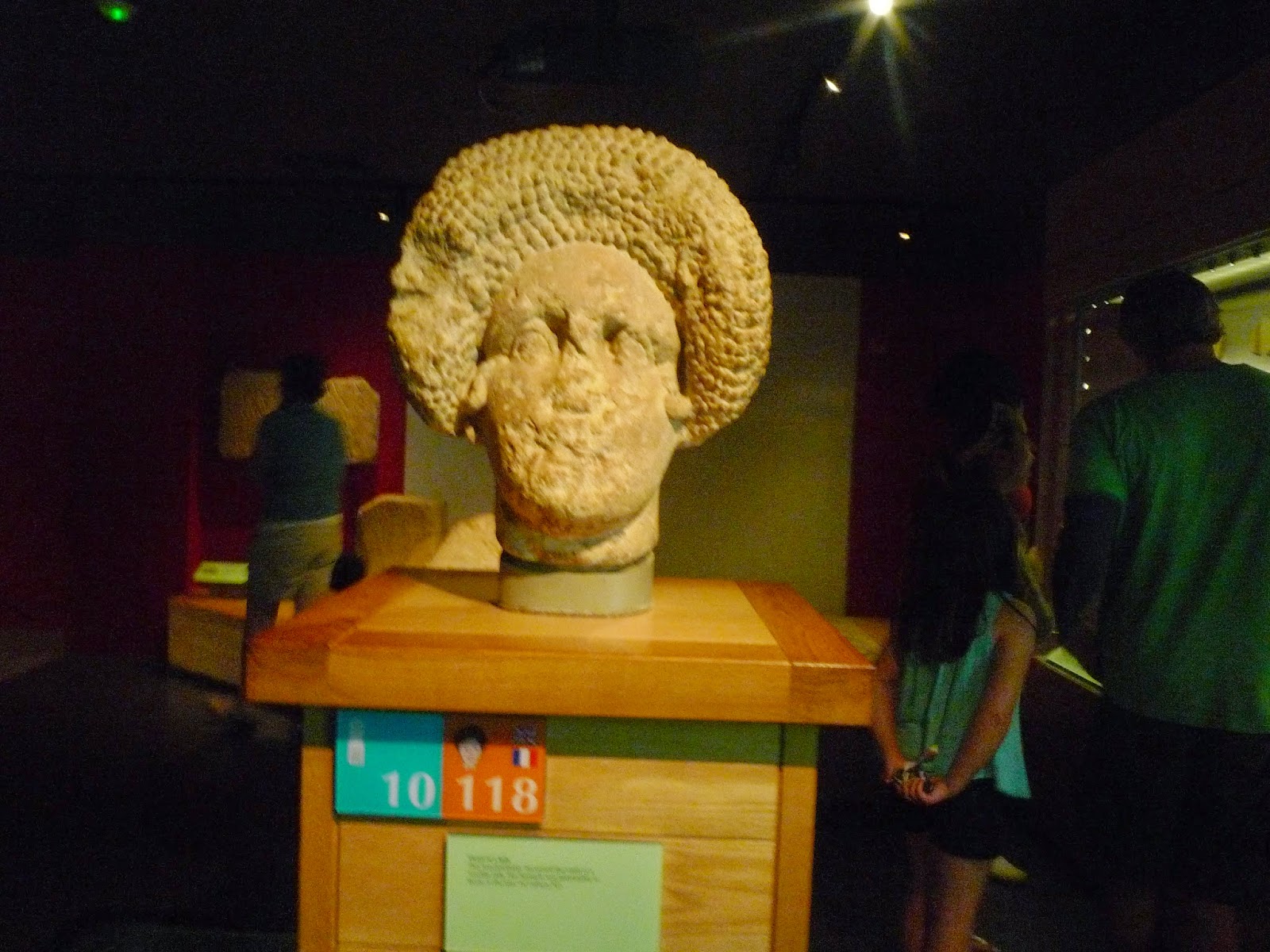THE ROMAN BATHS
By the time we arrived back in Bath, it was almost 4 pm.
Walking out from the station, we over to the Bath Parade Gardens in the center of the city. Further up you can see the Pulteney River.
Sally Lunn Bath Bun

From the entrance, we came out onto the Terrace overlooking the Great Bath.

The Roman Bath houses below - West and East Baths.
Free Spa water is available from the West Bath

No entry for this enclosure.. can only take photo from the window

This is the overflow - can feel the heat from the gushing hot water
The bronze head statue of Goddess Sulis Minerva.
This bronze head is larger than life size and was found in 1727. Minerva is a Roman goddess of wisdom and military success. It is believed that the head came off from the statue that stood in the temple and was probably broken off when the temple was ransacked by Christians.

the most famous .. Gorgon's head.
the ruins
The Royal Crescent.... a sweeping crescent of 30 terraced houses in Georgian design. The 114 columns with the curved facade was designed by John Wood in the 17th century
Bath Abbey.... the bells were ringing as we were walking past back to the train station.
The Parade Garden.... as elsewhere in every parks, there are people sunbathing and relaxing.
We continued walking along the street and shopping malls and soon came across the Sally Lunn Restrurant. We were still feeling full with the lunch besides we wanted to visit the Roman Baths before it close, so we decided to come back later (as we were informed that they would still be open)
Sally Lunn Bath Bun
It is a famous teacake... part bun, part bread and part cake, make from a yeast dough. It was claimed that the original recipe was brought to Bath by a French refugee called Solange Luyon who became known as Sally Lunn.
"The oldest house in Bath 1482. Sally Lunn lived here 1680".
There is also the oldest Bath Sweet Shop.. again closed for the day
Luck was with us that the Roman Baths was still open. So we bought our tickets and went in. You can obtain a audioguide from the reception.
the Houses of the Royal family
The Romans probably arrived in Britain around AD 43 and began to build the temple complex around the small town at Aquae Sulis (now known as Bath) around AD 60.
The Roman Baths is below the modern street level and has 4 main features:-
1. The Great Bath

From the entrance, we came out onto the Terrace overlooking the Great Bath.

The Roman Bath houses below - West and East Baths.
Free Spa water is available from the West Bath
Explanation on how the hot spring works
2. Sacred Spring.
see the shimmering surface of this hot spring pool...
No entry for this enclosure.. can only take photo from the window

This is the overflow - can feel the heat from the gushing hot water
3. The Roman Temple
The bronze head statue of Goddess Sulis Minerva.
This bronze head is larger than life size and was found in 1727. Minerva is a Roman goddess of wisdom and military success. It is believed that the head came off from the statue that stood in the temple and was probably broken off when the temple was ransacked by Christians.
4. The finds of the Roman Baths.

the most famous .. Gorgon's head.
This stone was discovered during the digging of the foundation of the Grand Pump Room in 1790. In Greek mythology, Gorgon is a monstrous feminine creature whose appearance would turn anyone who laid eyes upon it into stone eg Medusa and her 2 sisters. A stone head of a Gorgon was often place on temples and graves to avert the dark forces of evil.
After visiting the Roman Baths, we walked back to the Sally Lunn Restaurant but were informed that they were serving dinner already and there were no buns for sale!.
The Jane Austen Centre on the way to the Royal Crescent...
There is an interesting contrast between the architecture of the public front and the private rears of these houses. This is because the original purchaser would buy a length of the facade and then employed his own architect to build the house behind according to his own specifications!
However this is truly a beautiful place with its green lawn in the foreground.
The stone facade front with the columns
Bath Abbey.... the bells were ringing as we were walking past back to the train station.
close view of the Pulteney Bridge ...do you recognise this scene in the show Les Miserables?
This is so beautiful and the sound of the river so relaxing..
This is a day of British fast food. We took the train back to Paddington Station and have our dinner at Burger King... pork burgers for us and vegetarian for May.


























No comments:
Post a Comment